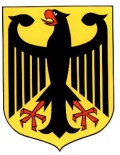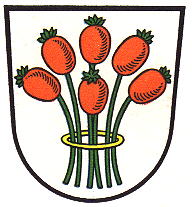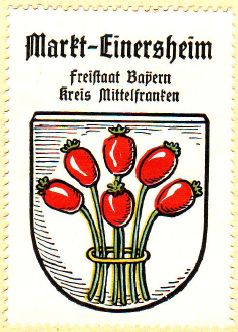Markt Einersheim: Difference between revisions
Knorrepoes (talk | contribs) m (Text replacement - "===Official blazon=== In" to "===Official blazon=== *(de) In") |
Knorrepoes (talk | contribs) m (Text replacement - "===Official blazon=== *(de) " to "{| class="wikitable" |+Official blazon |- |'''German''' | ") |
||
| Line 7: | Line 7: | ||
[[FIle:marktein.jpg|center|Wappen von {{PAGENAME}}]] | [[FIle:marktein.jpg|center|Wappen von {{PAGENAME}}]] | ||
= | {| class="wikitable" | ||
|+Official blazon | |||
|- | |||
|'''German''' | |||
| | |||
In Silber ein Bund von sechs beerenförmigen roten Früchten mit langen grünen Stielen, die unten von einem goldenen Ring zusammen gehalten werden. | |||
===Origin/meaning=== | ===Origin/meaning=== | ||
Revision as of 07:53, 5 July 2022
This page is part of the German heraldry portal Deutsche Wappensammlung |
Heraldry of the World |
|
German heraldry:
|
Selected collector's items from Germany:
|
MARKT EINERSHEIM
State : Bayern
District (Kreis) : Kitzingen (until 1972 Scheinfeld)
| German |
In Silber ein Bund von sechs beerenförmigen roten Früchten mit langen grünen Stielen, die unten von einem goldenen Ring zusammen gehalten werden. Origin/meaningEinersheim probably received town (Markt) rights in 1542. The oldest seal of the town dates from that year and it already shows the above arms. The origin and exact type of the fruits is not known. Most often they are shown as rosehips, but also poppy seeds have been mentioned. On March 6, 1847 the arms were officially granted and described as fruits of the Hiften (Rosa canina), the dogrose.
Contact and SupportPartners: Your logo here ? © 1995-2025, Heraldry of the World, Ralf Hartemink Literature : Stadler, 1964-1971, 8 volumes; Hupp, O: Kaffee Hag albums, 1920s |













